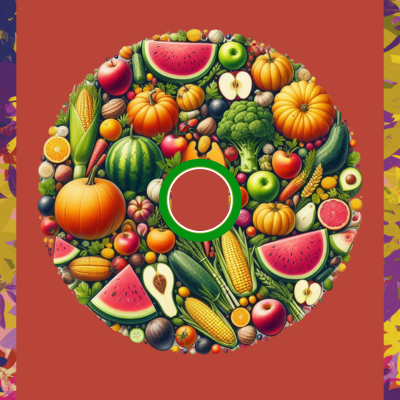

Seasonal eating– the reason why farm-fresh tomatoes taste delightful! We’ve lost the flavor of the season’s harvest, because of year-round food availability. It’s time to rediscover the mouthwatering benefits of eating with the seasons. From turbocharging your nutrition to slashing your grocery bill, seasonal eating isn’t just a trend. It’s a delicious return that your taste buds and wallet will thank you for. Ready to unlock nature’s flavor vault? Here’s 5 simple ways why seasonal eating will transform your family’s meals from ordinary to extraordinary.
The Power of Seasonal Foods: More Than Just Taste

1. Superior Nutrition
- Fresh, seasonal produce delivers a powerful nutritional punch. Here’s why:
- Maximum nutrient density at peak ripeness
- Shorter farm-to-table journey preserves vitamins and minerals
- No artificial ripening agents or preservation chemicals needed
- Natural alignment with your body’s seasonal needs
2. Budget-Friendly Benefits
Smart seasonal shopping helps your wallet in multiple ways:
- Lower prices during peak harvest times
- Reduced transportation costs for local produce
- Bulk buying opportunities for preservation
- Less expensive than out-of-season imports
You can find seasonal foods by:
- Talking to your store manager about which items are in season.
- Visiting local farmers’ markets and talking to the farmers.
- Adjusting your shopping habits to include seasonal foods.
3. Enhanced Flavor Experience
Seasonal produce simply tastes better because:
- Natural ripening process occurs on the plant
- Shorter storage and transportation time
- Optimal growing conditions
- Varieties chosen for flavor, not shipping durability
Making Seasonal Eating Work for You
Finding Seasonal Foods
Connect with your local food scene:
- Build relationships with local farmers at markets
- Consult your grocery store’s produce manager
- Join a Community Supported Agriculture (CSA) program
- Use online seasonal food guides for your region
Smart Shopping Strategies
Make the most of seasonal abundance:
- Stock up during peak season
- Learn basic preservation techniques (freezing, canning)
- Plan meals around seasonal ingredients
- Buy extra when prices are lowest
Meal Planning and Preparation
Transform seasonal ingredients into delicious meals:
- Create a rotating seasonal menu
- Experiment with new recipes featuring in-season produce
- Batch cook seasonal dishes for convenient leftovers
- Pack seasonal lunches to save money at work
Seasonal Money-Saving Tips

Maximum Value Strategies
- Purchase bulk quantities during peak season. When foods are in season and at their lowest price, you can purchase larger quantities and use various preservation methods. This can reduce your reliance on more expensive, out-of-season produce. For instance, you can freeze, can or pickle vegetables, or freeze portions of homemade dishes that feature seasonal ingredients.
- When fruits and vegetables are in season, they are more abundant, leading to lower prices. For example, you can purchase fall vegetables, such as beets, pumpkin, carrots, eggplant, and potatoes, at lower prices.
- Seasonal produce sold at local farmers’ markets often has lower prices than produce sold at grocery stores. Lower prices of produce are because it doesn’t have to travel as far to reach you, the consumer. You can find farms in your area by visiting localharvest.org or performing a simple Google search.
- Access to fresh, high-quality ingredients for home cooking. Cooking meals from scratch using seasonal produce is generally more affordable than purchasing prepared foods from grocery stores or restaurants.
Storage Solutions

Make your seasonal bounty last:
- Freeze berries and stone fruits for winter
- Can tomatoes and pickled vegetables
- Store root vegetables in cool, dark places
- Create preserves and jams
Seasonal Cooking Inspiration

Spring
- Tender lettuce varieties
- Fresh asparagus
- Early peas
- Young herbs
Summer
- Sun-ripened tomatoes
- Fresh berries
- Sweet corn
- Garden beans
Fall
- Winter squashes
- Root vegetables
- Late-season apples
- Hardy greens
Winter
- Storage crops
- Citrus fruits
- Winter squash
- Preserved foods
Cooking Seasonal Food From Scratch

Cooking seasonal food from scratch helps a healthier diet:
- You can control the quality and quantity of ingredients, particularly fat, sugar, salt, and chemicals. Pre-made and packaged foods often contain excessive preservatives which extend shelf life. By cooking from scratch, you can select fresh, high-quality ingredients, leading to healthier meals.
- Cooking from scratch encourages the use of fresh, seasonal produce, which is packed with essential vitamins and nutrients.
- Preparing meals at home often involves less processing compared to pre-made or restaurant foods. This reduces exposure to additives, preservatives, and unhealthy fats often found in processed foods, contributing to a healthier diet.
- Cooking from scratch allows you to tailor meals to your specific dietary needs and preferences. You can adjust ingredients and portion sizes for your health goals and dietary restrictions.
The process of cooking can encourage a greater awareness of your food and its nutrition. Selecting choice ingredients, experimenting with different recipes, and cooking techniques enhances your understanding of healthy eating. This mindfulness can lead to more informed food choices and appreciation of food in your well-being.
Making the Transition
Start your seasonal eating journey gradually:
- Begin with one seasonal meal per week
- Visit your local farmers’ market
- Learn about what grows in your region
- Start a small herb garden
- Master one preservation technique
Conclusion
Embracing seasonal eating isn’t just a return to tradition—it’s a smart, sustainable choice for modern living. By adjusting your meals with seasonal produce, you’ll enjoy superior taste, enhanced nutrition, and significant savings. Start small by adding one seasonal ingredient per week, and let your palate guide you. Your journey to seasonal eating begins at your local market, where each season brings new discoveries and delicious possibilities.
